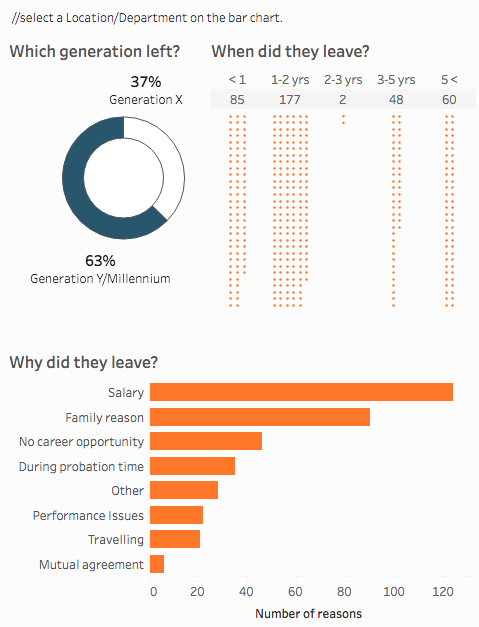Turnover analysis is a crucial HR research tool used to assess personnel needs and to understand why employees leave a company. Due to the significant friction associated with employee departures, resulting vacancies, and shifting personnel requirements, turnover—whether voluntary or involuntary—must be carefully tracked and evaluated from an economic perspective. This analysis is essential for minimizing the diverse costs associated with turnover (see Fig. F-2).
By conducting turnover analysis, HR management can influence the number of voluntary departures by identifying the root causes of turnover (see Fig. F-3) and implementing targeted countermeasures.
There are two primary forms of turnover analysis:
-
Qualitative Turnover Analysis: This approach focuses on understanding the individual motivations and structural reasons behind employee departures. It aims to develop actionable strategies for influencing turnover based on these insights. Fluctuation analysis is typically carried out through exit interviews, where employees share reasons for leaving the company.
-
Quantitative Turnover Analysis: This method looks at the number of departures segmented by various categories, such as the company as a whole, specific business units, job functions, gender, contract status, and comparisons to previous periods or other organizations. Fluctuation statistics help HR professionals understand average staff departures and use this data for medium- to long-term workforce planning. Additionally, quantitative analysis breaks down turnover by reason—such as death, disability, illness, or voluntary resignation—and helps calculate fluctuation indicators through time-based or inter-company comparisons.






![15 Employee Offboarding Templates That Save Hours of HR Time [Free Downloads] 15 Employee Offboarding Templates That Save Hours of HR Time [Free Downloads]](https://i1.wp.com/www.hrcloud.com/hubfs/Header.png?w=150&resize=150,100&ssl=1)
